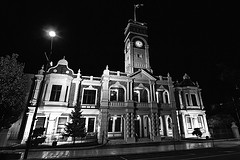Most of the qualities of a good civic good leader, I’m convinced, can be learned. A reasonably empathetic person can master the arts of relationship building, group management, and persuasion. An observant person can learn the processes behind public policy and, in time, see opportunities for action. With a little modesty, a good leader can find her role and, with a little audacity, fill it brilliantly.
But there’s one quality that the best leaders possess that I don’t think can be learned easily. And that is temperament. It’s an old-fashioned word that refers to a person’s nature or disposition, especially as it affects his or her behavior. And the temperament that the best leaders possess allows them to “quiet the self.”
The term comes from David Brooks, the New York Times columnist. He says it is the ability to “step out of the game” when criticized or insulted. “Enmity is a nasty frame of mind,” Brooks wrote not long ago. “Pride is painful. The person who can quiet the self can see the world clearly, can learn the subject and master the situation.”
Most of us can’t do this. If attacked, we inflate with anger. Our impulse is to strike back, quickly, with a cutting remark. What we learn is that, rather than ending the attack, it only escalates the conflict.
Or maybe we don’t strike back but seek revenge, using our positions to get even. A former president once went down that road. And, well, we know what happened to Richard Nixon.
Unfortunately, local governments are filled with those who can’t forget a slight or resist the impulse to strike back. I know of one elected official who no longer speaks to newspaper reporters, communicating only through emails that are filtered through an assistant. He then posts these emails online—as “the truth.” If asked, I’d offer one word of advice to him: Resign. He’s not cut out for this work.
That’s because being criticized in public life is like being hit in football. It’s not a flaw in the system; it’s a feature of the system. We give everybody a voice in politics in the belief that, in the din, the right way forward will emerge. But to get there, we have to endure a certain amount of nonsense and nastiness.
Successful leaders learn how to manage their reactions to the nastiness. Abraham Lincoln wrote what he called “hot letters” to his critics, then stuck them in a drawer with the inscription: “Never sent. Never signed.” Thomas Jefferson suggested cooling off by counting not just to 10 but to 100.
Some recommend a three-part response to being attacked in public: Listen politely, don’t get defensive, and ask for time before responding. This allows for a more thoughtful (and calmer) response.
But techniques can take you only so far. The best leaders do something deeper and better. They look at tense situations as if they were observers who are removed in time. They see their interests and those of their critics, and because it doesn’t feel personal, they react as calmly as actors on a stage. Attack these leaders, and they smile.
It unnerves their critics—just as it rattles other teams’ players when NFL quarterback Andrew Luck congratulates them for sacking him. Here’s how one cornerback described what it felt like when Luck popped up and said to him, “Great job!” “You know if you hear a quarterback get mad, you are in his head,” he said. “With Luck, you thought you hurt the guy, you hear ‘good job’ and you just say ‘aw, man.’ “
That’s what you want to hear from your critics as well, when you smile at their insults. “Aw, man.”
A version of this posting appeared on the Governing website.
Photo by Sarah licensed under Creative Commons.
